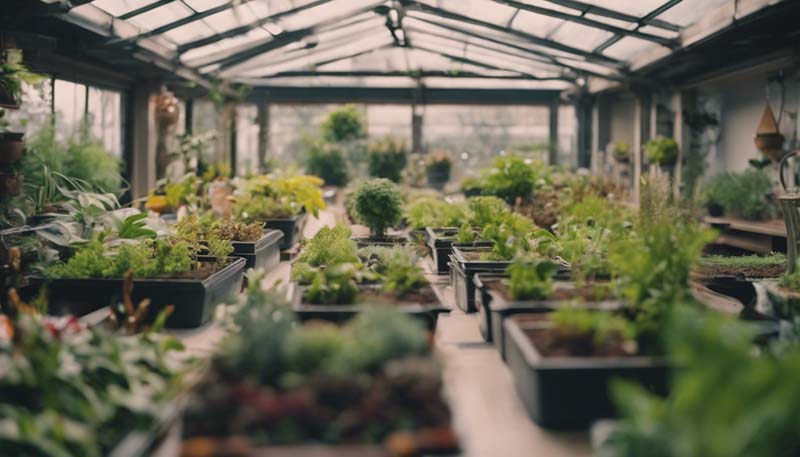The Role of Indoor Gardening in Reducing Land Use
As the global population continues to grow and urbanization expands, the demand for agricultural land is at an all-time high. However, there is a significant shift towards more sustainable practices that can reduce the need for extensive agricultural land use. Indoor gardening has emerged as a promising solution that not only conserves space but also offers a multitude of benefits for the environment and personal well-being.
Introduction to Indoor Gardening
Indoor gardening is the practice of growing plants within an enclosed space, such as a home, apartment, or dedicated indoor garden. It often involves the use of artificial lighting, climate control, and soilless growing mediums. This method of gardening has gained popularity due to its ability to bypass the limitations of outdoor space and climate conditions.
Advertisement
Reducing Land Use
Maximizing Space Efficiency
One of the primary advantages of indoor gardening is its ability to maximize space efficiency. By growing plants in vertical structures or utilizing space-saving techniques like hydroponics or aeroponics, indoor gardeners can produce a large quantity of produce in a small footprint.
Eliminating the Need for Large Agricultural Fields
Indoor gardens can significantly reduce the need for large agricultural fields. Since the climate is controlled, crops can be grown year-round, eliminating the need for fallow periods and increasing the overall productivity of the land used.
Conserving Biodiversity
By reducing the demand for land to grow crops, indoor gardening can help to preserve natural habitats and biodiversity. Less land is cleared for agriculture, which means fewer habitats are destroyed and less wildlife is displaced.
Environmental Benefits of Indoor Gardening
Water Conservation
Indoor gardens often use less water than traditional farming methods. Hydroponic systems, for example, recirculate water, reducing water consumption by up to 90% compared to soil-based agriculture.
Reduced Use of Pesticides
The controlled environment of an indoor garden allows for more precise pest control measures, reducing the need for harmful pesticides. This results in fewer chemicals entering the ecosystem and a healthier environment for both humans and wildlife.
Lower Carbon Footprint
Growing food indoors can reduce the carbon footprint associated with transportation. Since the produce is grown closer to where it is consumed, there is less need for long-distance shipping, which is a significant contributor to greenhouse gas emissions.

Economic and Social Benefits
Increased Food Security
Indoor gardens can contribute to food security by providing a local and reliable source of fresh produce. This is particularly beneficial in urban areas where access to fresh, healthy food may be limited.
Educational Opportunities
Indoor gardening can serve as an educational tool, teaching children and adults about plant biology, the environment, and sustainable practices. It can also foster a sense of community as people share their knowledge and experiences.
Mental Health Benefits
Gardening has been shown to reduce stress and improve mental well-being. Indoor gardens provide an accessible way for people to connect with nature and engage in a relaxing and rewarding hobby.
Challenges and Solutions
Initial Setup Costs
One of the challenges of indoor gardening is the initial setup cost, which can be high for advanced systems. However, there are many affordable options available for beginners, and the long-term savings in terms of resource use can offset the initial investment.
Energy Consumption
The use of artificial lighting for indoor gardens can lead to higher energy consumption. To mitigate this, gardeners can opt for energy-efficient LED lights and utilize motion sensors to reduce unnecessary use.
Technical Knowledge
Indoor gardening may require a certain level of technical knowledge, especially for hydroponic and aeroponic systems. However, there are numerous resources available online, and the learning curve can be part of the rewarding experience.
Future Prospects of Indoor Gardening
As technology advances, the efficiency and affordability of indoor gardening systems are expected to improve. Innovations in vertical farming, automated systems, and smart gardening technologies will likely make indoor gardening even more accessible and sustainable.
The role of indoor gardening in reducing land use is significant and multifaceted. It not only conserves valuable land resources but also offers a range of environmental, economic, and social benefits. As we look to the future and seek ways to sustainably feed a growing population, indoor gardening is a practice that deserves further exploration and investment.
Comment